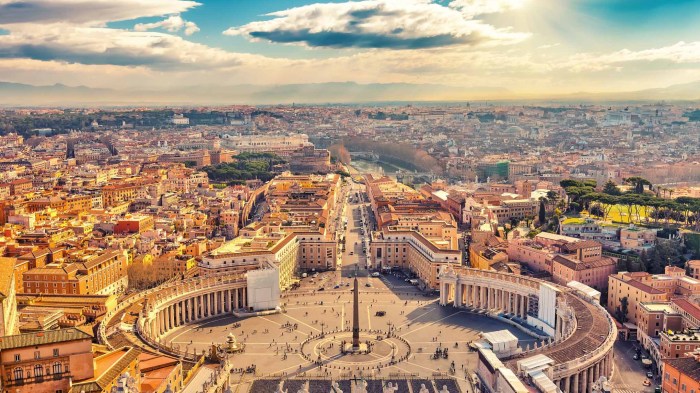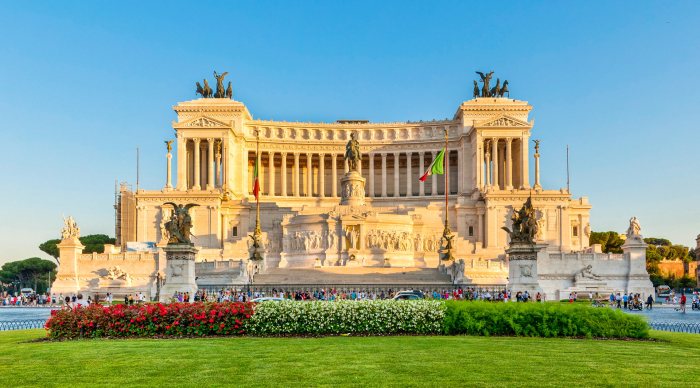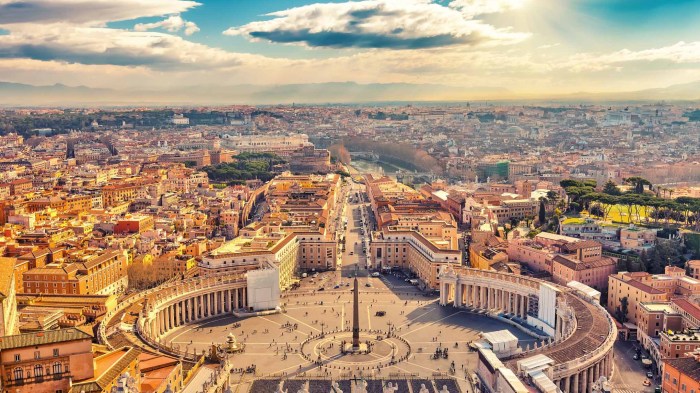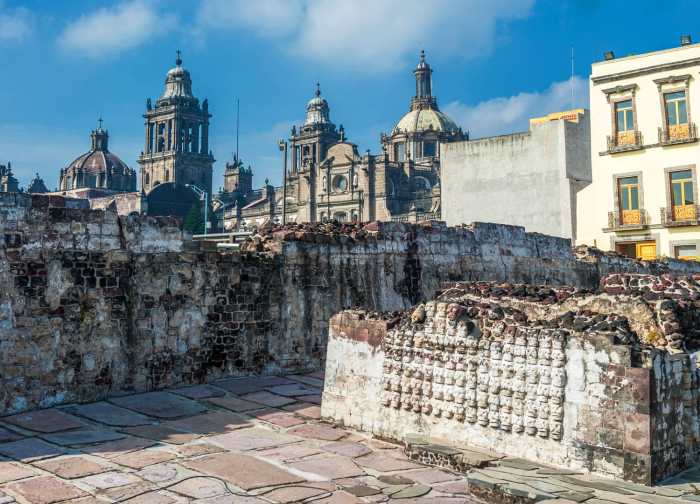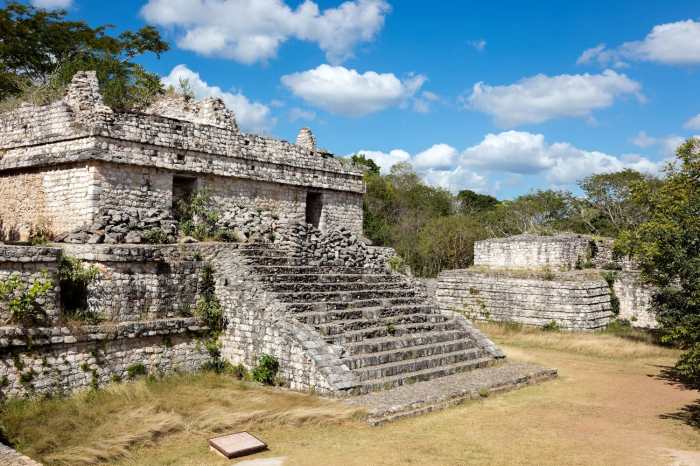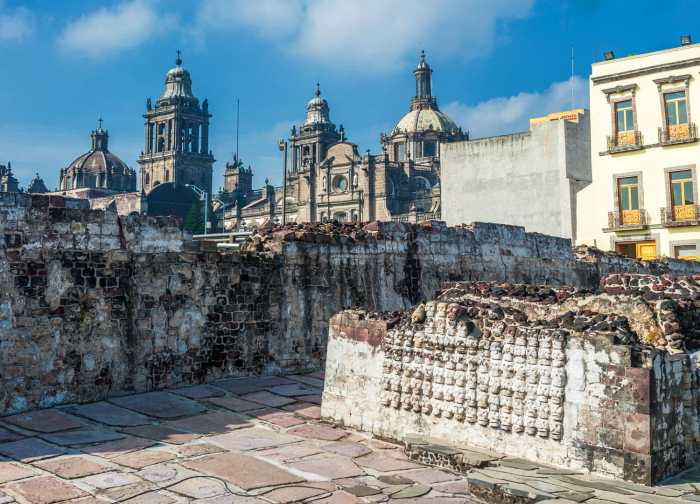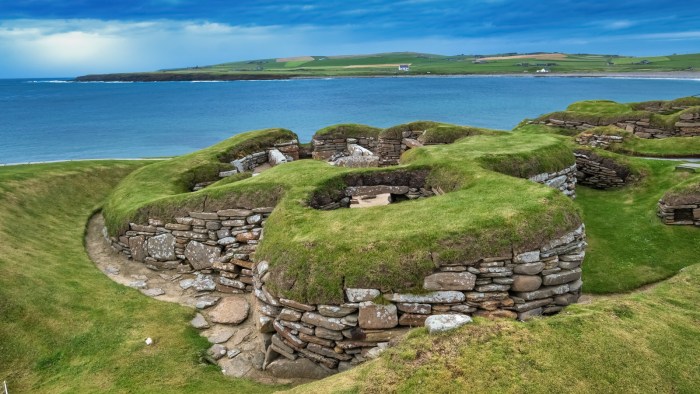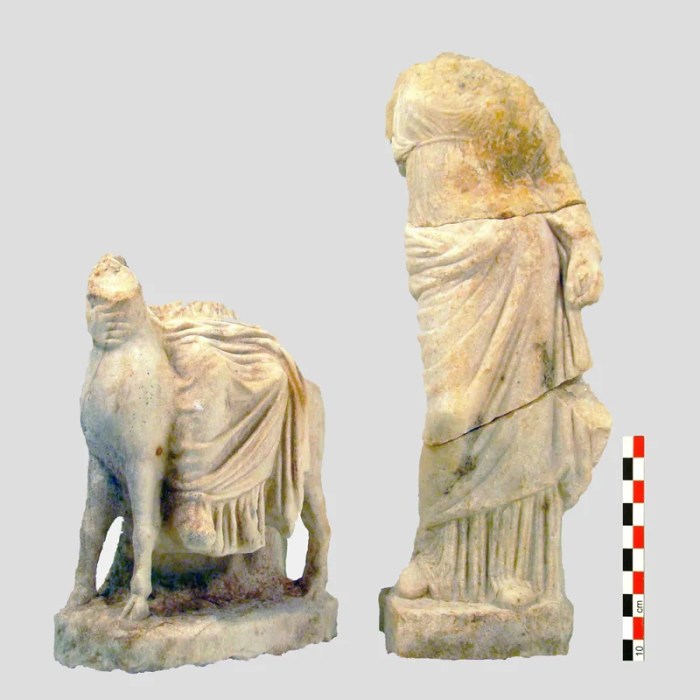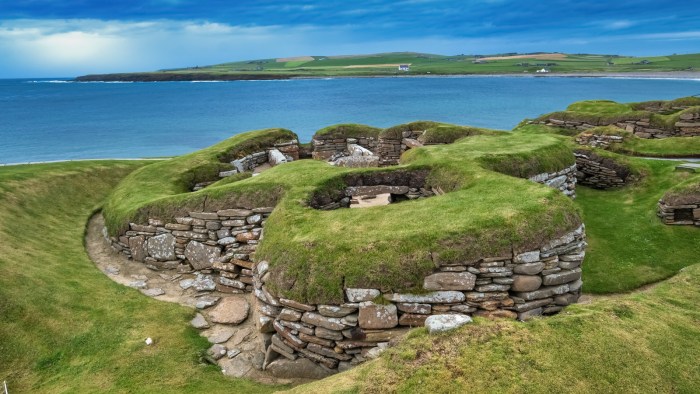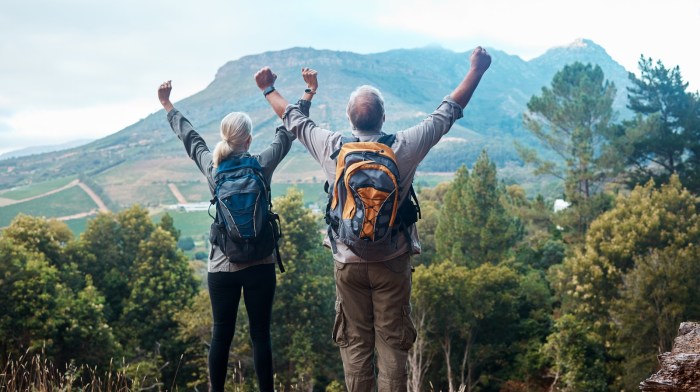Best Etruscan sites in Italy: Unveiling history, exploring ancient mysteries, and discovering the remnants of a civilization that once thrived in Italy. From the majestic ruins of Tarquinia to the well-preserved landscapes of Veii, this journey into the past promises an enriching experience. This exploration delves into the fascinating world of the Etruscans, revealing their unique culture, impressive architecture, and artistic expressions.
We’ll analyze what makes these sites stand out, examining the historical significance, preservation, and accessibility of each location.
This guide provides a comprehensive overview of the most important Etruscan sites in Italy. It covers everything from a concise historical overview of the Etruscans to practical information on visiting these incredible archaeological destinations. We’ll explore the criteria used to evaluate the “best” sites, examining factors such as historical significance, archaeological value, preservation, and accessibility.
Introduction to Etruscan Sites in Italy

The Etruscans, a fascinating and enigmatic people, flourished in central Italy from roughly the 8th to the 3rd centuries BCE. Their civilization, while ultimately absorbed by the expanding Roman Republic, left a significant mark on the Italian peninsula, influencing art, architecture, and even the very language of the region. Their unique culture, with its blend of indigenous traditions and influences from the Greek world, continues to captivate archaeologists and historians.Their influence extended beyond the realm of material culture.
The Etruscans developed a sophisticated system of government, trade, and religious beliefs. Their impact on the development of Italian civilization, though indirect, is undeniable. Understanding the Etruscan experience is crucial to comprehending the complex tapestry of Italian history.
Geographical Distribution of Etruscan Settlements
The Etruscans occupied a substantial area of central Italy, roughly corresponding to modern-day Tuscany, Lazio, and parts of Umbria and Emilia-Romagna. Their settlements were clustered around fertile river valleys and coastal plains, suggesting a strong connection to agriculture and trade. This concentration allowed for the development of powerful city-states, each with its own distinct characteristics and level of prosperity.
Exploring the best Etruscan sites in Italy is a fascinating journey through history. From the impressive ruins of Tarquinia to the well-preserved necropolises, you’ll be amazed by the ancient civilization. While wandering through these ancient landscapes, it’s interesting to consider the parallel world of wildlife conservation, like the recent news about tigers returning to Western Thailand. Tigers return western thailand is a great example of successful conservation efforts, reminding us of the importance of preserving natural habitats.
Ultimately, both the Etruscan heritage and the wildlife stories highlight the beauty and wonder of our planet.
The geographical spread reveals a pattern of interconnectedness among these cities, with trade routes and cultural exchange shaping their development.
Definition of “Best” in Archaeological Sites
Determining the “best” Etruscan site is inherently subjective. Criteria for evaluating such sites might include the site’s historical significance, the quality and quantity of preserved artifacts, the accessibility for visitors, and the overall impact on our understanding of Etruscan culture. Some sites might excel in one area, while others might stand out in another, making the “best” a matter of personal preference and the specific aspects being prioritized.
A site’s contribution to our historical knowledge and its potential to evoke a sense of the past are important considerations in the evaluation of an archaeological site’s value.
Top 5 Most Famous Etruscan Cities
Etruscan civilization thrived in numerous cities, each with its own character. The following table presents five prominent examples, highlighting their location, key features, and brief descriptions. These cities represent a selection of the numerous Etruscan settlements that have yielded valuable information about the culture.
| City Name | Location | Key Features | Brief Description |
|---|---|---|---|
| Tarquinia | Modern Tuscany, Italy | Tombs, painted pottery | Famous for its stunningly decorated painted tombs, offering a glimpse into Etruscan funerary rituals and artistic expression. |
| Cerveteri | Modern Tuscany, Italy | Necropolis, impressive tombs | Known for its vast and well-preserved necropolis, showcasing a range of elaborate tombs that provide insights into Etruscan burial practices and social hierarchies. |
| Veii | Near modern Rome, Italy | Well-preserved city walls, fortifications | An important city-state, known for its strong fortifications and strategic location. Excavations reveal valuable information about Etruscan urban planning and military capabilities. |
| Volterra | Modern Tuscany, Italy | Stoneworking, terracotta | Known for its impressive Etruscan stonework, terracotta artifacts, and rich history, demonstrating the mastery of craftsmanship in the region. |
| Falerii | Near modern Rome, Italy | Inscriptions, agricultural activity | Notable for its inscriptions, which offer valuable clues about Etruscan language and social structures, as well as evidence of the agricultural practices in the area. |
Criteria for Evaluating “Best” Etruscan Sites: Best Etruscan Sites In Italy
Deciding which Etruscan sites are the “best” is inherently subjective, as “best” often depends on individual priorities. However, a structured approach using objective criteria allows for a more reasoned comparison. These criteria should account for the historical significance, archaeological value, and preservation status of each site, alongside its accessibility to visitors. Ultimately, a “best” list will reflect a careful balancing of these factors.Evaluating Etruscan sites requires a multifaceted approach.
Different aspects of a site contribute to its overall value and impact. Factors like historical significance, archaeological findings, preservation quality, and accessibility for visitors are critical to determining a site’s overall merit.
Historical Significance and Archaeological Value
Etruscan sites hold immense historical value. Understanding their significance requires considering their role in the development of ancient Italy. The archaeological findings themselves provide critical insights into Etruscan society, culture, and daily life. The depth and quality of the artifacts unearthed are important indicators of a site’s historical and archaeological value. Evidence of elaborate burial rituals, advanced craftsmanship, and urban planning all contribute to a richer understanding of the Etruscan civilization.
Quality of Preservation and Accessibility
The physical condition of an Etruscan site directly affects its value for study and appreciation. Sites with well-preserved structures and artifacts offer a more complete picture of the past. Careful restoration and preservation efforts are crucial for maintaining the integrity of the archaeological record. Accessibility also plays a significant role. Easy access to the site, combined with adequate visitor facilities, enhances the experience and allows a wider audience to engage with the heritage.
This also involves considerations like visitor information and safety measures.
Comparison of Criteria for Judging “Best” Sites
Different criteria carry varying weight depending on the specific objectives of the evaluation. For example, a site with exceptional historical significance but poor preservation might be considered less “best” than one with good preservation and clear archaeological evidence, even if the historical context is slightly less profound. Balancing these factors is essential for a comprehensive evaluation. The criteria must be weighted and evaluated based on the type of site and the questions being asked.
Table Comparing Criteria for Different Etruscan Site Types
| Criterion | Description | Example Sites |
|---|---|---|
| Historical Significance | Impact on the development of ancient Italy, influence on subsequent civilizations. | Tarquinia (tombs), Veii (urban center), Cerveteri (necropolises) |
| Archaeological Value | Quality and quantity of artifacts, depth of understanding of Etruscan life. | Marzabotto (urban plan), Volterra (craftsmanship), Populonia (maritime activity) |
| Preservation Quality | Condition of structures and artifacts, effectiveness of restoration efforts. | Etruscan Museum of Florence (artifacts), Orvieto (preserved Etruscan walls), Pitigliano (tombs) |
| Accessibility | Ease of access, visitor facilities, safety measures, and information availability. | Chiusi (accessible necropolis), Arezzo (well-maintained sites), Vetulonia (site with good tourist facilities) |
Top Etruscan Sites in Italy
The Etruscans, a fascinating civilization that flourished in central Italy from the 8th to the 3rd centuries BCE, left behind a rich tapestry of archaeological treasures. Their cities, necropolises, and temples offer invaluable insights into their culture, daily life, and artistic sensibilities. These sites, often remarkably well-preserved, provide a window into a period of intense cultural exchange and development in the ancient Mediterranean world.The following Etruscan sites stand out for their historical significance, architectural ingenuity, and the artifacts they contain.
These sites showcase the range of Etruscan settlements and demonstrate the evolution of their civilization across time and geography. Their varied features and preserved structures provide a compelling narrative of their past.
Identifying the 10 Most Important Etruscan Sites
Ten key Etruscan sites offer a comprehensive overview of the civilization’s expanse and cultural diversity. These sites, spanning various periods and locations, provide a rich understanding of Etruscan society and artistic traditions.
Detailed Descriptions of the Sites
These sites, carefully excavated and studied, reveal a multitude of Etruscan architectural marvels and funerary practices. The sites vary in size and complexity, reflecting the different levels of urban development and societal structures within the Etruscan world.
- Veii: A major Etruscan city, Veii showcases sophisticated urban planning and impressive fortifications. Its proximity to Rome and its strategic location made it a significant player in the region. Excavations have unearthed extensive remains of temples, houses, and public buildings. The site’s defensive walls and the intricate city layout demonstrate the Etruscans’ advanced engineering capabilities.
- Tarquinia: Renowned for its remarkable painted tombs, Tarquinia offers a glimpse into Etruscan funerary rituals and artistic expression. The elaborate frescoes within the tombs depict scenes of daily life, mythology, and rituals, providing unique insights into their beliefs and values. The vibrant colours and intricate designs of these painted tombs are a testament to Etruscan artistic skill.
- Cerveteri: This site, with its extensive necropolis, stands as a prime example of Etruscan funerary practices. The elaborate tombs, often showcasing impressive architectural features and rich grave goods, offer a valuable understanding of Etruscan beliefs and social hierarchies. The necropolises of Cerveteri display the remarkable artistry of Etruscan craftsmanship, evident in the tombs and their decorative elements.
- Volterra: Famous for its alabaster workshops, Volterra played a crucial role in the production and trade of this exquisite material. The city’s extensive network of workshops and the quality of the finished products highlight its significance in the Etruscan economy. The site reveals the technical expertise and artistic prowess of the Etruscans in working with this delicate stone.
- Populonia: A major port city, Populonia reveals the importance of trade and maritime activity in the Etruscan world. The site’s location on the Tyrrhenian Sea provided access to vital trade routes and resources. The harbor and related infrastructure provide evidence of the Etruscan mastery of maritime commerce.
- Chiusi: This city, with its impressive citadel, showcases the Etruscan ability to build fortified settlements. Its strategic location and well-preserved remains illustrate the significance of defensive structures in their urban planning. The city’s layout and fortifications reflect the importance of defense and control in the Etruscan political landscape.
- Etruscan Necropolis of Monterozzi: This necropolis is significant for the sheer number of tombs it contains. The tombs, which vary in size and complexity, illustrate the evolution of Etruscan funerary practices and their growing sophistication. The variety of tomb types found here provides insights into different social classes and funerary rituals.
- Veiovi: Known for its impressive sanctuary, Veiovi showcases the importance of religious sites in Etruscan society. The elaborate structures and artifacts discovered there highlight the rituals and beliefs associated with this particular sanctuary. The site provides a glimpse into the spiritual and religious aspects of Etruscan life.
- Castellina in Chianti: Castellina in Chianti is known for its impressive Etruscan settlement, showcasing the development of urban planning and infrastructure. The well-preserved remains offer insights into the daily lives of the inhabitants and the layout of their dwellings. The settlement at Castellina demonstrates the Etruscans’ skills in constructing and maintaining their cities.
- Fiesole: Situated atop a hill, Fiesole presents a commanding view of the surrounding landscape and served as an important strategic point for the Etruscans. The well-preserved structures within the city showcase the development of urban planning and the Etruscans’ ability to adapt to diverse terrains.
Historical Context and Significance
These sites are crucial for understanding the Etruscan civilization’s history, social structures, and cultural practices. The sites offer a window into their interaction with other cultures, especially the Greeks and Romans. Their unique characteristics highlight the Etruscan’s contribution to the development of Italian culture.
Comparison of Architectural Styles and Features, Best etruscan sites in italy
The architectural styles and features of these sites vary considerably, reflecting the diversity of Etruscan settlements and the evolution of their architectural traditions over time. From the elaborate painted tombs to the impressive city walls, the Etruscan sites provide a wide range of examples of their creative and practical ingenuity.
Table of Top 5 Etruscan Sites
This table highlights key features of the top 5 Etruscan sites, providing a concise overview of their significance.
| Site Name | Location | Key Features | Notable Artifacts |
|---|---|---|---|
| Veii | Near Rome | Fortified city, temples, houses | Defensive walls, pottery, tools |
| Tarquinia | Near Rome | Painted tombs, urban center | Frescoes, pottery, jewelry |
| Cerveteri | Near Rome | Necropolis, impressive tombs | Tombs, pottery, bronze objects |
| Volterra | Tuscan region | Alabaster workshops, city walls | Alabaster sculptures, pottery |
| Populonia | Tuscan coast | Port city, harbor, temples | Maritime trade artifacts, pottery |
Exploring the Cultural Significance of Etruscan Sites
The Etruscan civilization, flourishing in central Italy from roughly the 8th to the 3rd centuries BCE, left behind a rich tapestry of material culture. Their impact extended far beyond the immediate confines of their settlements, profoundly influencing later Italian art and culture. Examining the artifacts and architecture of Etruscan sites provides a unique window into their sophisticated society, their beliefs, and their artistic expressions.The Etruscan legacy is interwoven with the development of Italian artistic traditions.
Their artistic innovations, from intricate pottery to monumental tombs, found resonance and inspiration in subsequent generations. The Etruscan fascination with the afterlife, evident in their elaborate tombs, impacted the symbolic language of later Italian funerary art.
Etruscan Artistic Expressions
Etruscan art encompassed a diverse range of forms, reflecting their multifaceted society. From exquisite metalwork to intricate painted pottery, their artistic expressions reveal a keen eye for detail and a strong sense of craftsmanship. The techniques and styles developed by Etruscan artists were absorbed and adapted by subsequent Roman artists.
Etruscan Artifacts at the Sites
Numerous significant artifacts have been unearthed from Etruscan sites across Italy. These range from everyday objects like pottery and jewelry to elaborate funerary offerings like bronze statues and painted urns. The presence of these artifacts provides invaluable insight into the daily lives, beliefs, and social hierarchies of the Etruscan people. Examples include the impressive bronze sculptures found in the tombs of the rich and powerful, showcasing the mastery of metalworking techniques.
The vibrant painted pottery, with its often-mythological depictions, offers glimpses into Etruscan narratives and beliefs.
Social and Religious Aspects Reflected in the Sites
The layout and features of Etruscan sites often reveal much about their social structure and religious practices. The monumental tombs of the elite, for example, signify their elevated status and their belief in an afterlife. Religious practices, as depicted in the artifacts and architectural elements, point towards a complex pantheon of deities and rituals. Tombs, often richly decorated, offer a glimpse into the Etruscan view of the afterlife and their elaborate funeral rites.
The presence of elaborate tombs alongside less ornate ones suggests a stratified social hierarchy, where wealth and status played a crucial role.
Table of Etruscan Art Forms
| Art Form | Description | Site Location |
|---|---|---|
| Painted Pottery | Intricate designs often depicting scenes from daily life, mythology, or religious rituals. | Various sites across Etruria, including Cerveteri and Veii. |
| Bronze Sculptures | Often found in tombs, these portray figures of deities, mythical creatures, or deceased individuals. | Notable examples found in the tombs of the elite at Tarquinia and other sites. |
| Metalwork | Exquisite craftsmanship in objects like jewelry, mirrors, and tools. Demonstrated technical proficiency. | Numerous sites throughout Etruria, especially those associated with metalworking workshops. |
| Funerary urns | Elaborate vessels used for holding the ashes of the deceased. | Tombs in sites like Tarquinia and Chiusi provide examples. |
| Architecture (Tombs) | Elaborate structures reflecting the belief in an afterlife. Varied styles from simple chambers to monumental mounds. | Necropolises (cemeteries) of cities like Tarquinia and Cerveteri. |
Visiting and Experiencing Etruscan Sites
Delving into the Etruscan world requires careful planning and an understanding of the practicalities involved. These ancient sites, often nestled in picturesque Italian landscapes, offer a captivating glimpse into a lost civilization. This section details the accessibility, optimal experience strategies, and crucial planning tips for a rewarding journey.Navigating the Etruscan archaeological sites requires a blend of research and adaptability.
The experience extends beyond simply visiting; it’s about engaging with the history, appreciating the artistry, and respecting the delicate heritage these sites represent.
Accessibility and Practical Information
Etruscan sites vary in accessibility, from easily navigable museums to more remote archaeological digs. Many sites feature paved walkways, but uneven terrain and stairs may be present. Checking the official website for each site is essential to understand specific accessibility features. Some sites might have designated areas for wheelchairs or other mobility aids. Be prepared for varying levels of signage, with some sites having more detailed information than others.
Exploring the best Etruscan sites in Italy is a must for any history buff. From the fascinating tombs at Tarquinia to the impressive city of Veii, the region is brimming with ancient wonders. To prepare for your trip, checking out the top travel accessories on Amazon top travel accessories on amazon is a great idea – you’ll want to be comfortable and prepared for exploring these incredible sites.
Don’t forget to pack a good pair of walking shoes for all those ancient ruins!
Methods for Experiencing the Sites
The best approach depends on your interests and preferences. For a comprehensive understanding, guided tours are invaluable. They provide contextual information and insights into the historical significance of the artifacts and structures. Self-guided tours offer greater flexibility, allowing you to pace yourself and delve into areas that particularly interest you. However, a good self-guided experience requires pre-visit research.
Practical Tips for Planning a Visit
Booking tickets in advance, especially during peak season, is highly recommended to avoid long queues. Check the opening hours, as they may vary depending on the site and the time of year. Comfortable shoes are a must, as you’ll likely be doing a fair amount of walking. Bring water and snacks, particularly if you’re visiting sites that lack nearby cafes.
Consider the weather forecast and dress appropriately. Lastly, respect the site’s rules and guidelines to preserve the integrity of the archaeological heritage.
Impact of Tourism on Preservation
Responsible tourism plays a critical role in the preservation of these fragile sites. Overcrowding and improper behavior can damage artifacts and the surrounding environment. Adhering to site guidelines and respecting the archaeological context are essential for the long-term preservation of Etruscan heritage. Tourism revenue often directly supports conservation efforts and maintenance, thus responsible tourism is vital for the sites’ continued existence.
Table of Etruscan Site Information
| Site Name | Opening Hours | Admission Fee | Travel Route |
|---|---|---|---|
| Museo Nazionale Etrusco di Villa Giulia (Rome) | Tues-Sun 9:00-19:00 | €8 | Public transport (metro, bus) |
| Etruscan Necropolis of Cerveteri | Tues-Sun 9:00-19:00 | €10 | Train to Cerveteri, then bus or taxi |
| Etruscan Necropolis of Tarquinia | Tues-Sun 9:00-19:00 | €12 | Train to Tarquinia, then bus or taxi |
Etruscan Sites: A Deeper Dive
The Etruscans, a fascinating civilization of ancient Italy, left behind a rich tapestry of art, architecture, and culture. Their influence extended throughout the region, interacting with and often inspiring their neighbors. Understanding their development, their relationships with other cultures, and ultimately, their demise, is crucial to appreciating the full scope of their legacy. This deeper dive explores the intricacies of Etruscan society, their unique contributions, and the ongoing quest to uncover their secrets.
Etruscan Society and Culture: Evolution
The Etruscans, emerging around the 8th century BCE, developed a complex society centered on city-states. Their culture, distinct from the Greeks and Romans, exhibited a blend of indigenous traditions and influences from other civilizations. Early Etruscan society was likely structured around a warrior aristocracy, with evidence suggesting a strong emphasis on ritual and religion. Their mastery of metalworking, particularly bronze, allowed them to produce exquisite artifacts, showcasing their artistic skills.
Etruscan-Other Civilization Interactions
The Etruscans were not isolated. Their interaction with the Greeks, particularly in the realm of trade and artistic exchange, is well-documented. Etruscan cities often displayed Greek-style architecture, suggesting a significant cultural exchange. Furthermore, the Etruscans engaged in trade with the Phoenicians, and even had contact with the early Romans. These interactions shaped their culture and contributed to their unique identity.
Their relationship with the Greeks was particularly influential in their artistic styles and religious practices.
Exploring the best Etruscan sites in Italy is a fantastic way to delve into history. However, recent travel advisories related to the ongoing coronavirus public health emergency ( coronavirus public health emergency ) have significantly impacted travel plans, especially for those looking to visit these ancient marvels. Luckily, with careful planning and adhering to guidelines, these incredible sites can still be enjoyed responsibly.
Theories on the Etruscan Decline
The decline of the Etruscan civilization, starting around the 5th century BCE, is a topic of ongoing debate among historians. Various theories posit a combination of factors, including internal strife, political instability, and the growing power of the Romans. One notable theory suggests that the Etruscans’ economic decline, possibly due to competition with other Mediterranean powers, contributed significantly to their eventual fall.
Latest Archaeological Discoveries and Research
Archaeological research continues to unveil new insights into Etruscan life. Recent discoveries of previously unknown settlements and burial sites provide invaluable data about their daily routines and beliefs. The study of Etruscan inscriptions, using advancements in decipherment techniques, sheds light on their language and their worldview. New findings often challenge existing assumptions and offer fresh perspectives on their civilization.
Preservation Efforts
Preservation of Etruscan heritage is a priority for Italian authorities. Extensive efforts are underway to protect and restore Etruscan sites, using modern techniques and methodologies. Efforts focus on mitigating environmental damage, maintaining archaeological integrity, and promoting the understanding of Etruscan culture. This proactive approach ensures that future generations can appreciate the wonders of this ancient civilization.
Importance of Individual Sites
Each Etruscan site holds a unique significance in the context of the Etruscan civilization. For example, the city of Veii played a crucial role in Etruscan politics and war. The tombs at Tarquinia showcase their artistic achievements and beliefs about the afterlife. The understanding of Etruscan society and culture is deeply intertwined with the significance of these individual sites.
Evolution of Etruscan Society and Culture
| Time Period | Key Developments | Notable Sites |
|---|---|---|
| 8th – 7th Century BCE | Emergence of city-states, development of a warrior aristocracy, early artistic expression. | Early settlements, religious centers |
| 6th Century BCE | Flourishing of art and architecture, increased contact with other civilizations. | Tarquinia, Veii, Cerveteri |
| 5th – 3rd Century BCE | Political instability, growing Roman influence, shift in cultural dominance. | Decline of major Etruscan cities, emergence of Roman power |
This table illustrates the major phases in the development of Etruscan society and culture. The evolution is marked by periods of growth, interaction, and ultimately, decline. Each period is characterized by significant changes and notable achievements, which are highlighted by the sites mentioned.
Visual Representation of Etruscan Sites
The Etruscan civilization, flourishing in central Italy for centuries, left behind a rich tapestry of architectural and artistic expressions. Understanding their visual legacy is crucial to appreciating their culture and societal structures. Their monuments, settlements, and burial practices offer a unique window into their world, revealing aspects of their beliefs, values, and daily lives.Visual elements, from the materials used to the spatial arrangement of the sites, offer valuable clues about Etruscan society and their interactions with the environment.
The careful study of these elements allows us to piece together a picture of their artistic sensibilities, technological capabilities, and social organization.
Architectural Styles and Monumental Structures
Etruscan architecture varied across different regions and periods, but common elements emerged. Their impressive temple structures, often characterized by a high podium and a triangular pediment, stand as testaments to their architectural prowess. The Etruscans were masters of using terracotta, stone, and wood, often in elaborate combinations. Examples of monumental structures include the temple complexes at Veii and Tarquinia, showcasing the impressive scale and decorative detailing of their work.
The use of columns and decorative friezes added grandeur to these structures.
Materials and Construction Techniques
The Etruscans were adept at utilizing various materials in their constructions. Terracotta, a fired clay, was extensively employed for architectural elements like roof tiles, decorative friezes, and even statues. Stone, particularly in areas with readily available resources, was used for foundations, walls, and monumental features. Wood, a crucial material in everyday life, was likely used for beams, doors, and interior elements, though less often preserved in the archaeological record.
The methods of construction reveal aspects of their engineering skills. For example, the Etruscans used sophisticated techniques to create vaulted ceilings and elaborate drainage systems in their cities and tombs.
Layout and Design of Settlements
Etruscan settlements, like the well-preserved example of Marzabotto, exhibit a fascinating layout. Often built on hilltops or elevated areas, the settlements show evidence of strategic planning and an understanding of urban design principles. The placement of temples, public spaces, and residential areas within the settlement reflects social hierarchies and cultural values. For instance, the presence of public squares and marketplaces suggest the importance of community gatherings and trade.
Furthermore, the careful design of the city layouts reveals their understanding of practical considerations such as water access and drainage.
Importance of Visual Elements in Understanding Etruscan Sites
The visual aspects of Etruscan sites are essential for understanding their culture. The architecture, materials, and layout provide insights into their social structures, religious beliefs, and artistic sensibilities. The carefully planned and decorated tombs, for instance, provide a glimpse into their views of the afterlife and their social status. The materials and construction techniques reveal the availability of resources and the sophistication of their engineering capabilities.
The study of these elements enables us to reconstruct their world and gain a deeper appreciation for their civilization.
Table of Visual Aspects of Etruscan Sites
| Image | Description |
|---|---|
| An image of a well-preserved Etruscan temple, showcasing the use of terracotta and stone. | This image demonstrates the impressive scale and decorative detailing of Etruscan temple structures. The use of terracotta for architectural elements is apparent, as well as the substantial stonework for foundations and walls. The layout and design of the temple complex are indicative of careful planning. |
| An image of a reconstructed Etruscan city plan, highlighting the layout and design principles. | This image shows the strategic placement of public spaces, residential areas, and temples within the settlement. It illustrates the Etruscans’ understanding of urban design and their consideration for practical aspects like water access and drainage. |
| An image of a richly decorated Etruscan tomb, displaying intricate designs and wall paintings. | This image showcases the Etruscans’ artistic skills and their belief system concerning the afterlife. The rich decoration within the tomb reveals details about their culture and social standing. The careful execution of the murals and other decorative elements are significant. |
| An image of a section of Etruscan terracotta sculpture. | This image illustrates the use of terracotta as a primary material for artistic expression. The craftsmanship and detailed design highlight the Etruscans’ artistic skills and the variety of forms they created. |
Last Recap

In conclusion, the Etruscan sites of Italy offer a captivating glimpse into a fascinating past. From the grandeur of their cities to the artistry of their artifacts, these sites showcase a rich tapestry of culture and history. We’ve explored the criteria for evaluating these remarkable sites, the significance of their cultural impact, and the practical aspects of visiting them.
Hopefully, this guide has inspired you to embark on your own journey to discover the captivating world of the Etruscans.

